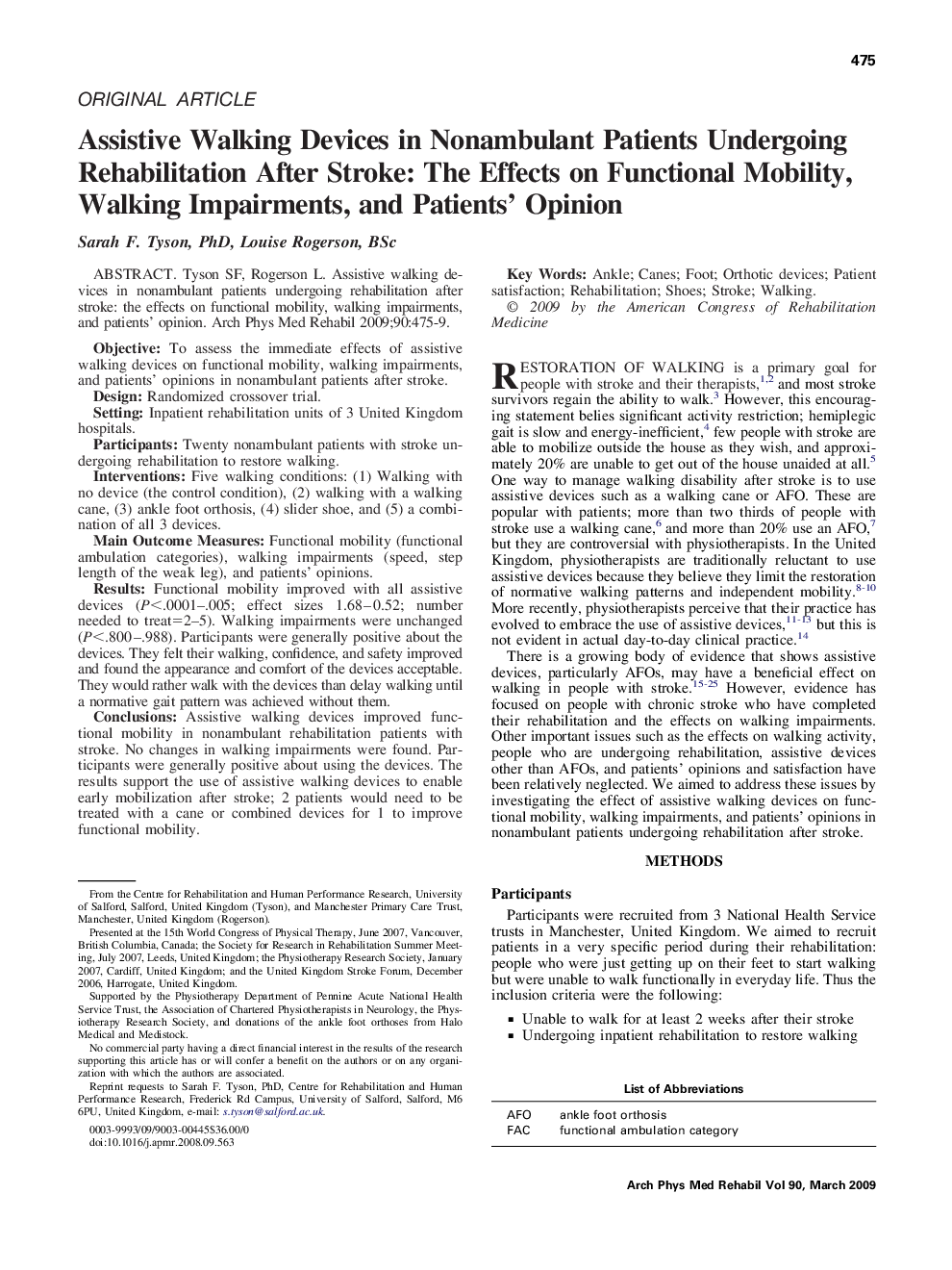| Article ID | Journal | Published Year | Pages | File Type |
|---|---|---|---|---|
| 3449886 | Archives of Physical Medicine and Rehabilitation | 2009 | 5 Pages |
Tyson SF, Rogerson L. Assistive walking devices in nonambulant patients undergoing rehabilitation after stroke: the effects on functional mobility, walking impairments, and patients' opinion.ObjectiveTo assess the immediate effects of assistive walking devices on functional mobility, walking impairments, and patients' opinions in nonambulant patients after stroke.DesignRandomized crossover trial.SettingInpatient rehabilitation units of 3 United Kingdom hospitals.ParticipantsTwenty nonambulant patients with stroke undergoing rehabilitation to restore walking.InterventionsFive walking conditions: (1) Walking with no device (the control condition), (2) walking with a walking cane, (3) ankle foot orthosis, (4) slider shoe, and (5) a combination of all 3 devices.Main Outcome MeasuresFunctional mobility (functional ambulation categories), walking impairments (speed, step length of the weak leg), and patients' opinions.ResultsFunctional mobility improved with all assistive devices (P<.0001–.005; effect sizes 1.68–0.52; number needed to treat=2–5). Walking impairments were unchanged (P<.800–.988). Participants were generally positive about the devices. They felt their walking, confidence, and safety improved and found the appearance and comfort of the devices acceptable. They would rather walk with the devices than delay walking until a normative gait pattern was achieved without them.ConclusionsAssistive walking devices improved functional mobility in nonambulant rehabilitation patients with stroke. No changes in walking impairments were found. Participants were generally positive about using the devices. The results support the use of assistive walking devices to enable early mobilization after stroke; 2 patients would need to be treated with a cane or combined devices for 1 to improve functional mobility.
